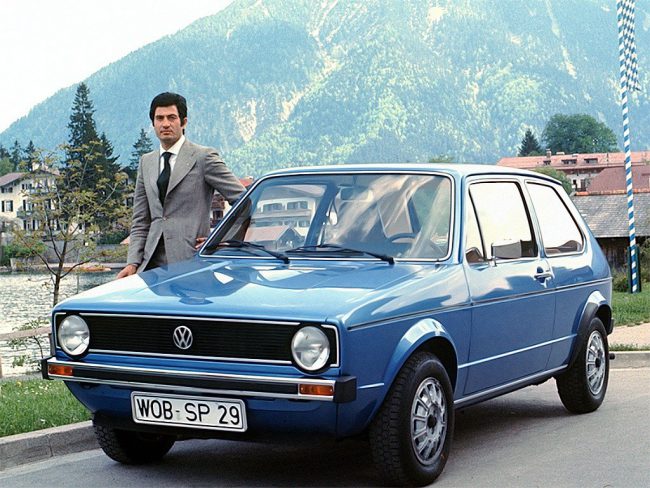
Volkswagen Golf engines
Content
Every major car company has a model that runs like a red thread through the entire period of brand formation, gaining the respect of specialists and the love of ordinary users. Such a machine is a kind of testing ground for designers, engineers and propulsion specialists. At Volkswagen AG, the honor of becoming a perennial beacon of the market fell to the Golf.

History of the model
The first car of the Golf model, which rolled off the assembly line in 1974, was named after the warm current of the Gulf Stream, which washes the entire coast of the European continent with its waters. So the designers wanted to emphasize the desire to create a car that would become a favorite for the unification of Old Europe. They succeeded brilliantly: about 26 million copies have already rolled off the assembly lines of VW factories.
At the same time, the production of the car, the first copy of which received the technical name "Tour-17" and they do not think to turn off: the car is so popular among Europeans of the middle class. The car received dozens of prestigious awards at the world's most famous car shows. The pinnacle was the recognition of the seventh generation Golf World Car of the Year (WCOTY) in 2013.
This is how the strategic expansion of European roads unfolded by the German people's cars Golf.
1st generation: 1974-1993 (Mk.1)
The first golf hatchbacks had miniature dimensions, front-wheel drive and a 1,1-liter internal combustion engine (FA) with a capacity of 50 hp. Responsibility for the supply of fuel was assigned to an ancient mechanism by modern standards - a carburetor. A similar diesel version (factory code CK) a year and a half after the start of production of the first cars. The total circulation of the first series of Golf cars was 6,7 million units. In the Republic of South Africa, three-door hatchbacks Mk.1 were assembled until 2008.
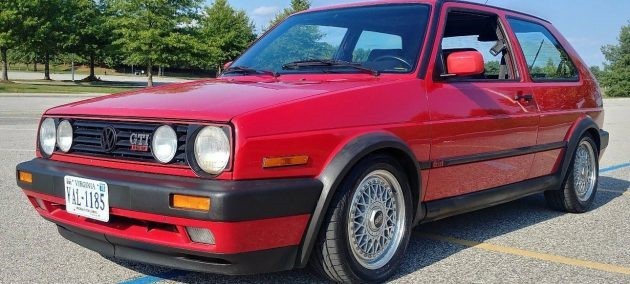
2nd generation: 1983-1992 (Mk.2)
After evaluating the economic effect of the sale of the first series of "Tour-17", the management of Volkswagen AG already 10 years later put on stream the production of an updated version of the Golf. The car, in addition to more massive dimensions, received a number of innovations - an anti-lock braking system, power steering, and an on-board computer. The Synchro G60 all-wheel drive car with a 1,8-liter GU (GX) engine with 160 hp appeared for the first time in this series.
3nd generation: 1991-2002 (Mk.3)
And again, VW engineers did not deviate from tradition, launching the third Golf series in 1991, that is, a year before the official end of the assembly of Mk.2 cars. Motors with a working volume of 1,4-2,9 liters. were installed under the hoods of cars of three options: hatchback, station wagon and convertible. The result of the ten-year production of machines of the third series is 5 million copies.
4nd generation: 1997-2010 (Mk.4)
An almost four-year break in the serial production of the Golf blew up the European and American car markets: in 1997, the Mk.4 car appeared in car dealerships in a completely new design, without sharp corners, with an interior a la Passat and a diverse set of power plants. Ultra-modern direct fuel injection has become widespread. The most powerful car in the series was the 3,2-liter all-wheel drive R32 with DSG preselective gearbox.
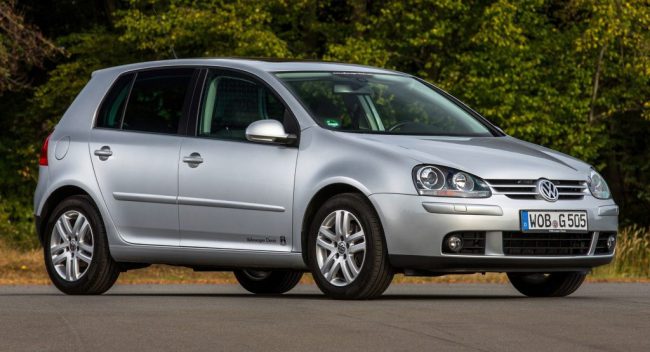
5nd generation: 2003-2009 (Mk.5)
For six years, the car of the next, 5th generation was produced. Body options: hatchback and station wagon. The release of the single-volume Golf Plus dates back to the same time, but this is a completely independent car, worthy of its production history. Of the technical innovations of that time - a multi-link suspension, a body with rigidity increased by 80% compared to the previous series, the use of power plants based on TSI and FSI engines.
6nd generation: 2009-2012 (Mk.6)
The design of the new series of machines was entrusted to Walter da Silva. The talented engineer focused on changing the parameters and settings of the engines, in general, leaving the geometric parameters of the 5th generation Golf unchanged. To mechanical and automatic gearboxes, a wide variety of DSG-type preselective units and ultra-modern, robotic ones were added. By this time, the release of the most powerful Golf R car belongs, the engine of which we will discuss below.
7nd generation: 2012-2018 (Mk.7)
Today's life of the Volkswagen Golf is five-door hatchbacks with 125 or 150-horsepower 1,4-liter turbocharged internal combustion engines for the Russian market. In Europe and the USA, the range of cars is wider: station wagons are sold there with hybrid, diesel or all-electric power plants. The modern look of the Golf was also created by Walter da Silva. Notes of novelty are added to severity. As you might guess, modern sports style prevails in them. The machine is as light as possible thanks to the use of the innovative MQB platform. At the rear, engineers offer a complete “stuffing”: a torsion beam or a multi-link version. Ultimately, the choice of suspension depends on the power plant and driving style.
8th generation: 2019-present (Mk.8)
All major modern systems are also present in the Golf Mk.8. To the adaptive cruise control, all-round camera system, the ability to recognize road signs and markings, an electric power steering was added. From the Passat, the new car received a semi-autonomous Travel Assist driving system.
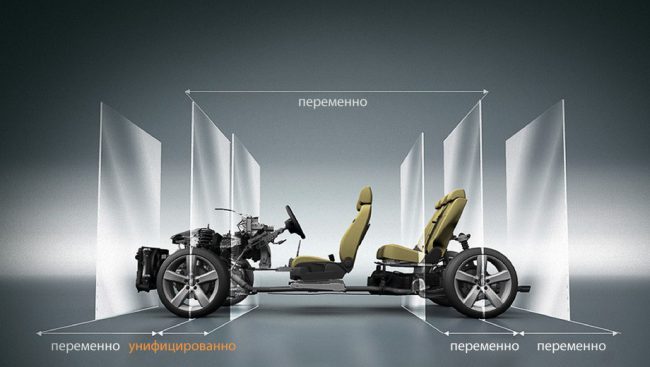
For the first time on Volkswagen cars, the Car2X standard appeared. Using it, you can exchange information with vehicles located within a radius of up to 0,8 km. With 24 cars of the eighth generation sold since December 2019, the position of the best-selling car in Europe was only passed by the Golf at the beginning of 2020: it was overtaken by the new generation Renault Clio.
Engines for Volkswagen Golf
First appearing on European highways in 1974, the Volkswagen Golf has become a real test laboratory for the engineers of the engine division of the concern. For 45 years, over two hundred diesel and gasoline power plants have been under the hood of cars of various designs. This is a kind of record: no other automaker has given one model the role of a design experimental base.
There are so many power plants for the Golf in the list below that, contrary to tradition, not to divide the distribution areas of engines, this time, in order to avoid confusion, we had to separately indicate the technical data of the power plants for the Russian market and buyers in Europe / America. Therefore, in two parts of the table, repetitions of factory codes are possible.
| Marking | A type | Volume, cm3 | Maximum power, kW / h.p. | Supply system |
|---|---|---|---|---|
| FA, DD | petrol | 1093 | 37/50 | OHC, carburetor |
| FH, FD | –:– | 1471 | 51/70 | OHC, carburetor |
| CK | diesel | 1471 | 37/50 | OHC |
| FP | petrol | 1588 | 55/75, 74/101, 99/135 | DOHC, distributed injection |
| EG | –:– | 1588 | 81/110 | OHC, mechanical injector |
| GF | –:– | 1272 | 44/60 | OHC, carburetor |
| JB | –:– | 1457 | 51/70 | OHC, carburetor |
| RE | –:– | 1595 | 53/72 | OHC, carburetor |
| EW | ||||
| EX | –:– | 1781 | 66 / 90, 71 / 97 | SOHC or OHC, carburetor |
| 2H | –:– | 3980 | 72/98, 76/103, 77/105, 85/115, | SOHC or OHC, carburetor |
| DX | –:– | 1781 | 82/112 | OHC, mechanical injector |
| CR, JK | diesel | 1588 | 40/54 | OHC |
| CY | turbocharged diesel | 1588 | 51/70 | SOHC |
| HK, MH | petrol | 1272 | 40/55 | OHC, carburetor |
| JP | diesel | 1588 | 40/54 | direct injection |
| JR | –:– | 1588 | 51/70 | direct injection |
| OR PN | petrol | 1595 | 51/69 | OHC, carburetor |
| VAG RF | –:– | 1595 | 53/72 | OHC, carburetor |
| EZ | –:– | 1595 | 55/75 | OHC, carburetor |
| GU, GX | –:– | 1781 | 66/90 | OHC, carburetor |
| RD | –:– | 1781 | 79/107 | OHC, carburetor |
| OR EV | –:– | 1595 | 55/75 | OHC, carburetor |
| PL | –:– | 1781 | 95/129 | DOHC, electronic injection |
| KR | –:– | 1781 | 95/129, 100/136, 102/139 | injector |
| NZ | –:– | 1272 | 40/55 | OHC, electronic injection |
| RA, SB | turbocharged diesel | 1588 | 59/80 | OHC |
| 1H | petrol with compressor | 1763 | 118/160 | OHC, electronic injection |
| GX, RP | petrol | 1781 | 66/90 | OHC, electronic injection |
| 1P | –:– | 1781 | 72/98 | OHC, electronic injection |
| PF | –:– | 1781 | 79/107 | injector |
| PB | –:– | 1781 | 82/112 | injector |
| PG | petrol with compressor | 1781 | 118/160 | OHC, electronic injection |
| 3G | –:– | 1781 | 154/210 | DOHC, electronic injection |
| ABD, AEX | petrol | 1391 | 40 / 55, 44 / 60 | OHC |
| AEK | –:– | 1595 | 74 / 100, 74 / 101 | SOHC, port injection |
| AFT | –:– | 1595 | 74 / 100, 74 / 101 | SOHC, port injection |
| ABU | –:– | 1598 | 55/75 | OHC |
| AAM, ANN | –:– | 1781 | 55/75 | OHC, electronic injection |
| ABS, ACC, ADZ, ANP | –:– | 1781 | 66/90 | OHC, single injection |
| AEF | diesel | 1896 | 47/64 | OHC |
| AAZ | turbocharged diesel | 1896 | 54 / 74, 55 / 75 | OHC |
| 1Z, AHU, FTA | –:– | 1896 | 47 / 64, 66 / 90 | Common Rail |
| AFN | –:– | 1896 | 81/110 | OHC direct injection |
| 2E,ADY | petrol | 1984 | 85/115 | DOHC or OHC, electronic injection |
| AGG | –:– | 1984 | 85/115 | SOHC, port injection |
| ABF | –:– | 1984 | 110/150 | DOHC, distributed injection |
| AAA | –:– | 2792 | 128/174 | OHC |
| ABV | –:– | 2861 | 135 / 184, 140 / 190 | DOHC, distributed injection |
| AKS | –:– | 1595 | 74/101 | OHC, electronic injection |
| AWG, AWF | –:– | 1984 | 85/115 | OHC, electronic injection |
| AHW, AKQ, APE, AXP, BCA | –:– | 1390 | 55/75 | DOHC, distributed injection |
| AEH, AKL, APF | turbocharged petrol | 1595 | 74 / 100, 74 / 101 | DOHC or OHC, electronic injection |
| AVU, BFQ | petrol | 1595 | 75/102 | distributed injection |
| ATN, AUS, AZD, BCB | petrol | 1595 | 77/105 | DOHC, distributed injection |
| BAD | –:– | 1598 | 81/110 | DOHC direct injection |
| AGN, BAF | –:– | 1781 | 92/125 | DOHC, distributed injection |
| AGU, ARZ, AUM | turbocharged petrol | 1781 | 110/150 | DOHC, distributed injection |
| AUQ | –:– | 1781 | 132/180 | DOHC, distributed injection |
| AGP, AQM | diesel | 1896 | 50/68 | direct injection |
| AGR | turbocharged diesel | 1896 | 50 / 68, 66 / 90 | Common Rail |
| AXR, ATD | –:– | 1896 | 74/100 | distributed injection |
| AHF, ASV | –:– | 1896 | 81/110 | direct injection |
| AJM, AUY | –:– | 1896 | 85/115 | direct injection |
| ASZ | –:– | 1896 | 96/130 | Common Rail |
| ARL | –:– | 1896 | 110/150 | Common Rail |
| APK | petrol | 1984 | 85 / 115, 85 / 116 | DOHC or OHC, port injection |
| AZH | –:– | 1984 | 85/115 | DOHC or OHC, port injection |
| AZJ | –:– | 1984 | 85/115 | OHC |
| AGZ | –:– | 2324 | 110/150 | DOHC or OHC, port injection |
| AQN | –:– | 2324 | 125/170 | DOHC, distributed injection |
| AQP, WUA, BDE | –:– | 2771 | 147 / 200, 150 / 204 | DOHC, distributed injection |
| BFH, BML | –:– | 3189 | 177/241 | DOHC, distributed injection |
| BiH | gasoline | 1984 | 75/102 | OHC, port injection |
| BCA | petrol | 1390 | 55/75 | DOHC, distributed injection |
| BUD | –:– | 1390 | 59/80 | DOHC, distributed injection |
| BKG, BLN | –:– | 1390 | 66/90 | DOHC direct injection |
| CAXA | turbocharged petrol | 1390 | 90/122 | DOHC |
| BMY | –:– | 1390 | 103/140 | DOHC direct injection |
| BLG | –:– | 1390 | 125/170 | DOHC direct injection |
| BGU, BSE, BSF | petrol | 1595 | 75/102 | OHC, port injection |
| BACK, BLF, BLP | –:– | 1598 | 85/115 | DOHC direct injection |
| BRU, BXF, BXJ | turbocharged diesel | 1896 | 66/90 | OHC, port injection |
| BKC, BLS, BXE | –:– | 1896 | 77/105 | Common Rail |
| BDK | –:– | 1968 | 55/75 | OHC, port injection |
| BKD | –:– | 1968 | 103/140 | DOHC, distributed injection |
| BMN | –:– | 1968 | 125/170 | Common Rail |
| AXW, BLR, BLX, BLY, BVX, BVY, BVZ | petrol | 1984 | 110/150 | DOHC direct injection |
| AXX, BPY, BWA, CAWB, CCTA | –:– | 1984 | 147/200 | DOHC direct injection |
| BYD | –:– | 1984 | 169 / 230, 177 / 240 | DOHC direct injection |
| BDB, BMJ, BUB, CBRA | –:– | 3189 | 184/250 | DOHC, distributed injection |
| CVD | –:– | 1390 | 118/160 | DOHC |
| BLS, BXE | turbocharged diesel | 1896 | 74 / 100, 77 / 105 | Common Rail |
| CBDB | –:– | 1968 | 77 / 105, 103 / 140 | Common Rail |
| CBZA | turbocharged petrol | 1197 | 63/85 | OHC |
| CBZB | –:– | 1197 | 77/105 | OHC |
| CGGA | petrol | 1390 | 59/80 | distributed injection |
| CCSA | –:– | 1595 | 72/105 | OHC, port injection |
| CAYB | turbocharged diesel | 1598 | 66/90 | DOHC, Common Rail |
| CAYC | –:– | 1598 | 77/105 | Common Rail |
| CHGA | petrol | 1595 | 72 / 98, 75 / 102 | DOHC or OHC, port injection |
| CBDC, CLCA, CUUA | turbocharged diesel | 1968 | 81/110 | DOHC, Common Rail |
| CBAB, CFFB, CJAA, CFHC | –:– | 1968 | 103/140 | DOHC, Common Rail |
| CBBB, CFGB | –:– | 1968 | 125/170 | DOHC, Common Rail |
| CCZB | turbocharged petrol | 1984 | 154 / 210, 155 / 211 | DOHC direct injection |
| CDLG | –:– | 1984 | 173/235 | DOHC direct injection |
| CDLF | –:– | 1984 | 199/270 | DOHC direct injection |
| CJZB, CYVA | –:– | 1197 | 63/85 | direct injection |
| CJZA | –:– | 1197 | 77/105 | direct injection |
| CYVB | –:– | 1197 | 81/110 | direct injection |
| CMBA, CPVA | turbocharged petrol | 1395 | 90/122 | direct injection |
| HONOR | –:– | 1395 | 92/125 | DOHC |
| CHEA, CHEA | –:– | 1395 | 110/150 | direct injection |
| CLHB | turbocharged diesel | 1598 | 66/90 | Common Rail |
| CLHA | –:– | 1598 | 77/105 | Common Rail |
| CHURCH | –:– | 1598 | 81/110, 85/115, 85/116 | Common Rail |
| CRBC, CRLB | –:– | 1968 | 110/150 | Common Rail |
| CUNA | turbocharged diesel | 1968 | 135/184 | Common Rail |
| CHZD | turbocharged petrol | 999 | 81/110, 85/115, 85/116 | direct injection |
| VINEGAR, CXSA | petrol | 1395 | 90/122 | direct injection |
| CJXE | turbocharged petrol | 1984 | 195/265 | direct injection |
| SADC | –:– | 1798 | 118 / 160, 125 / 170 | DOHC |
| CRMB, DCYA, ALREADY, CRLB | turbocharged diesel | 1968 | 110/150 | Common Rail |
| CHHB | turbocharged petrol | 1984 | 154/210, 162/220, 168/228 | DOHC |
| CHHA | –:– | 1984 | 162 / 220, 169 / 230 | distributed injection |
| CJXC | –:– | 1984 | 215 / 292, 221 / 300 | direct injection |
| CHPA, CPTA | –:– | 1395 | 103 / 140, 108 / 147 | multipoint injection |
| DLBA | –:– | 1984 | 168 / 228, 180 / 245 | direct injection |
| DAYS | –:– | 1984 | 212 / 288, 221 / 300 | direct injection |
| CJXG, DJHA | –:– | 1984 | 215 / 292, 228 / 310 | direct injection |
| CHZK | –:– | 999 | 63/85 | direct injection |
| CHZC | –:– | 999 | 81/110 | distributed injection |
| DDYA | turbocharged diesel | 1598 | 85 / 115, 85 / 116 | Common Rail |
| CRMB, DCYA, ALREADY, CRLB | –:– | 1968 | 110/150 | Common Rail |
| CPWA | gasoline turbocharged | 1395 | 81/110 | direct injection |
| DACA | turbocharged petrol | 1498 | 96/130 | direct injection |
| DKRF | –:– | 999 | 85 / 115, 85 / 116 | direct injection |
| DADA | –:– | 1498 | 96 / 130, 110 / 150 | DOHC |
| CAPD | –:– | 1498 | 110/150 | direct injection |
| DHFA | gasoline turbocharged | 1498 | 96/130 | direct injection |
| AHW, AXP, AKQ, APE, BCA | petrol | 1390 | 55/75 | distributed injection |
| AEH, AKL, APF | turbocharged petrol | 1595 | 74 / 100, 74 / 101 | distributed injection |
| AVU, BFQ | petrol | 1595 | 75/102 | distributed injection |
| AGN | –:– | 1781 | 92/125 | distributed injection |
| AGU, ARZ, AUM | turbocharged petrol | 1781 | 110/150 | distributed injection |
| AGR | turbocharged diesel | 1896 | 50 / 68, 66 / 90 | Common Rail |
| AHF, ASV | –:– | 1896 | 81/110 | direct injection |
| AZJ | petrol | 1984 | 85/115 | OHC |
| APK | –:– | 1984 | 85 / 115, 85 / 116 | distributed injection |
| AGZ | –:– | 2324 | 110/150 | distributed injection |
| AQP, WUA, BDE | –:– | 2771 | 147 / 200, 150 / 204 | DOHC, distributed injection |
| BGU, BSE, BSF | petrol | 1595 | 75/102 | distributed injection |
| BACK, BLF, BLP | –:– | 1598 | 85/115 | direct injection |
| BJB, BKC, BXE | turbocharged diesel | 1896 | 77/105 | Common Rail |
| BKD | –:– | 1968 | 103/140 | distributed injection |
| AXW, BLR, BLX, BLY, BVY, BVZ, BVX, BMB | petrol | 1984 | 110/150 | DOHC direct injection |
| CBZA | turbocharged petrol | 1197 | 63/85 | OHC |
| CBZB | –:– | 1197 | 77/105 | OHC |
| CGGA | petrol | 1390 | 59/80 | DOHC, distributed injection |
| CAXA | –:– | 1390 | 90/122 | DOHC |
| CVD | –:– | 1390 | 118/160 | DOHC |
| CMXA, CCSA | –:– | 1595 | 75/102 | distributed injection |
| CAYC | turbocharged diesel | 1598 | 77/105 | Common Rail |
| CLCA, CBDC | –:– | 1968 | 81/110 | Common Rail |
| CBAA, CBAB, CFFB | turbocharged diesel | 1968 | 103/140 | Common Rail |
| CBBB, CFGB | –:– | 1968 | 125/170 | DOHC direct injection |
| CCZB | turbocharged petrol | 1984 | 154 / 210, 155 / 211 | direct injection |
| CDLG | –:– | 1984 | 173/235 | direct injection |
| CRZA, CDLC | –:– | 1984 | 188/255 | direct injection |
| CLCA | turbocharged diesel | 1984 | 81/110 | Common Rail |
| CDLF | turbocharged petrol | 1984 | 199/270 | direct injection |
| CJZB, CYVA | –:– | 1197 | 63/85 | direct injection |
| CJZA | –:– | 1197 | 77/105 | direct injection |
| CMBA, CPVA, Vinegar, CXCA | petrol | 1395 | 90/122 | direct injection |
| HONOR | turbocharged petrol | 1395 | 92/125 | DOHC |
| CHPA, CPTA | –:– | 1395 | 103 / 140, 108 / 147 | multipoint injection |
| CHEA, CHEA | –:– | 1395 | 110/150 | direct injection |
| CWVA | petrol | 1598 | 81/110 | distributed injection |
| CHHB | turbocharged petrol | 1984 | 154/210, 162/220, 168/228 | DOHC |
| CJXC | –:– | 1984 | 215 / 292, 221 / 300 | direct injection |
| CJZA | –:– | 1197 | 77/105 | direct injection |
The production of such a huge array of power plants, of course, was accompanied by milestones. For 45 years, under the hood of the Volkswagen Golf, the whole color of design thought has visited - from conventional carburetor internal combustion engines to twin-shaft engines with electronic fuel injection systems. Briefly, with an indication of the main technical characteristics - about each such milestone.
Engine FA (GG)
The very first motor, mounted by Volkswagen AG engineers under the hood of the Tur-17, had a working volume of 1093 cm3. In order to appreciate how tiny the first “golf” got a motor, it’s enough to look at the maximum torque indicator: it was only 77 Nm, six to seven times less than that of medium-sized engines of the last decade of the XNUMXth century - the first decade of the XNUMXst century.
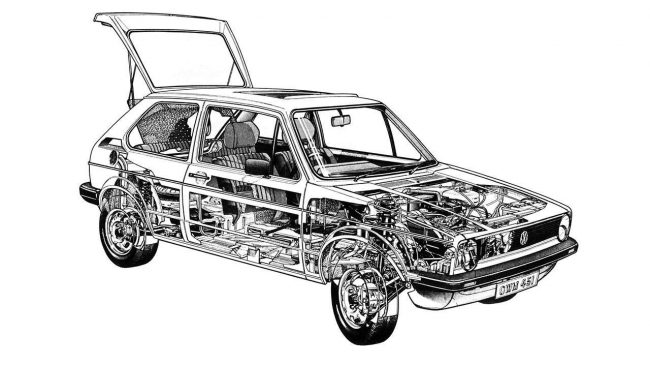
Other characteristics:
- compression ratio - 8,0: 1;
- cylinder diameter - 69,5 mm;
- number of cylinders - 4;
- number of valves - 8.
The maximum speed of a car equipped with an FA (GG) engine was 105 km / h.
DX engine
In 1977, the 1st generation Golf cars entered the market with a new engine with a working volume of 1781 cm3 (power - 112 hp). It received the factory code DX. For the first time, German engineers moved away from using a carburetor: the fuel supply in the power system was carried out by means of a mechanical injector.

- timing drive - gear;
- head type - SOHC / OHC;
- cooling type - water;
- compression ratio - 10,0:1.
The DX engines used A95 unleaded gasoline as fuel.
PL engine
In 1987, for the 2nd generation of front-wheel drive Golf cars, the engine builders presented a real surprise: for the first time, it became possible to equip an engine with two camshafts with the state-of-the-art electronic fuel injection system in the KE-Jetronic intake manifold.
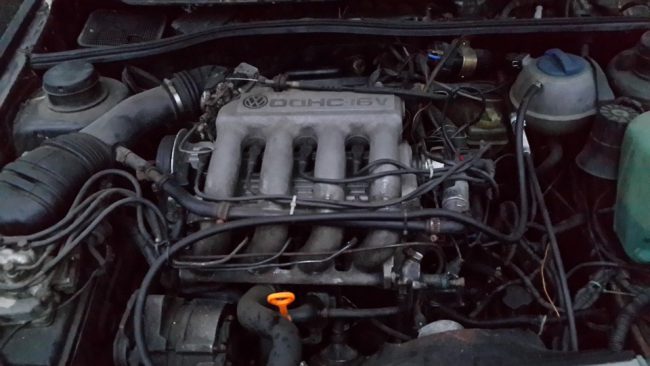
The turbocharged petrol engine is equipped with a three-stage variable catalyst.
An in-line 4-cylinder engine with a working volume of 1781 cm3 produced 129 hp. In fairness, it should be noted that electronic injection was not widely used on engines that were installed in Golf cars. Pretty quickly, it was supplanted by a more economical direct injection system.
The most powerful engines for Volkswagen Golf
The highest power on the stand, and later on road tests (270 hp), was developed by the three-door all-wheel drive Golf hatchbacks of the 6th generation Mk6 (2008) with an automatic transmission. As a power plant, they used CDLF engines, produced from 2004 to 2014 at the Audi plant in Gyor, Hungary.
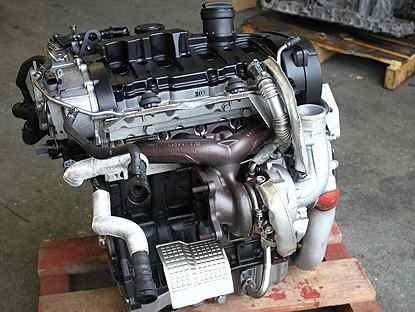
The 2,0 TFSI engine of the EA113 series with the factory code CDLF is a further development of the head copy of the series, the aspirated AXX (hereinafter - BYD). It is an in-line 4-cylinder 16-valve engine with a direct fuel injection system. Main characteristics:
- cylinder block material - cast iron;
- compression ratio - 10,5: 1;
- volume - 1984 cm3;
- maximum torque - 350 Nm at 3500 rpm;
- maximum power - 270 hp
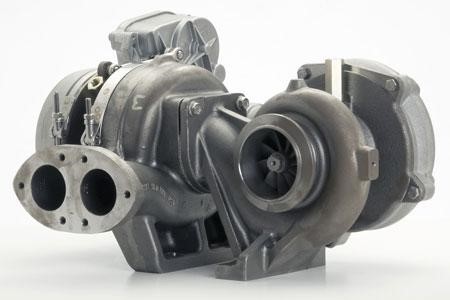
With the CDLF engine installed under the hood, the “golfs” could boast of fairly moderate fuel consumption:
- in the city - 12,6 l;
- outside the city - 6,6 liters;
- combined - 8,8 liters.
The air blower is a KKK K03 turbine with a pressure of 0,9 bar. More powerful K04 turbines were installed on tuned versions of the hatchback.
For stable operation of the engine, about 500 g / 1000 km of 5W30 or 5W40 brand oil were required.
The total volume of oil in the engine is 4,6 liters. The required oil change parameters are at least once for every 15 thousand km. run. The ideal option for the system to work is with an oil change after 8 thousand km. The level of standard oil filling (except for the first one) is 4,0 liters.
The engine turned out to be so successful that it successfully “emigrated” from a miniature “golf” to solid Audi models (A1, S3 and TTS), as well as to the Seat Leon Cupra R and Volkswagen Scirocco R. It is noteworthy that the designers refused to cover the cylinder block with aluminum head, made of cast iron. Compared to the BYD engines, the CDLF has a different intake manifold, a new intercooler and intake camshaft. Other improvements:
- balancing cylinder head mechanism with two balancer shafts;
- crankshaft with thickened persistent tides;
- The pistons are designed for reduced compression using heavy duty connecting rods.
The engine is equipped with hydraulic compensators, a phase shifter is installed on the intake shaft. Timing drive - belt, with a standard replacement procedure every 90 thousand km.
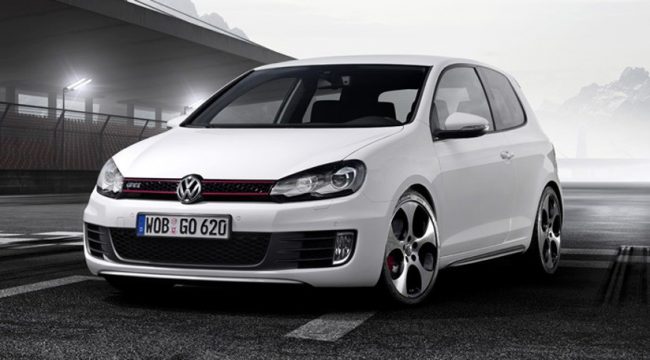
Initially developed for Euro IV environmental standards, the engine was modified during operation to the Euro V protocol. The lowest level of CO2 emissions is 195-199 g / km. The developers did not set a travel resource for the CDLF motor, but in practice it is about 300 thousand km. The modified motor could work without loss of resource for 250 thousand km, and at maximum performance it reached half a million kilometers.
Do you need even more power?
8 years later, in 2016, the mechanics of Volkswagen AG decided to conduct an interesting experiment: it was decided to equip the five-door hatchbacks of the 6th generation with ultra-modern 1,9-liter turbocharged gasoline engines of the EA888 series:
- CJXC - 292-300 hp;
- DNUE - 288-300 hp;
- CJXG (DJHA) - 292-310 hp
How justified is the installation of such monstrous power plants in tiny, in comparison even with average sedans, cars, one can only guess. All engines are equipped with direct injection fuel system.
On the example of the CJXC engine, you can see how well the mechanics did a good job on their offspring in terms of efficiency. Fuel consumption:
- in the city - 9,1 l;
- outside the city - 5,8 liters;
- combined - 7,0 liters.
The downside of economy is the problem of maintaining normal pressure. The main failures in the operation of engines of this series occur due to a drop in oil pressure, imperfections in the oil pump electronics. Boost pressure regulators brand V465 after 50 thousand km. mileage must be re-adjusted.
By the way, for these motors, the craftsmen have developed hardware tuning, which brings the performance of the car from just very powerful to completely unimaginable. Judge for yourself:
- power (factory / after tuning) - 300/362 hp;
- torque (factory / after tuning) - 380/455 Nm.
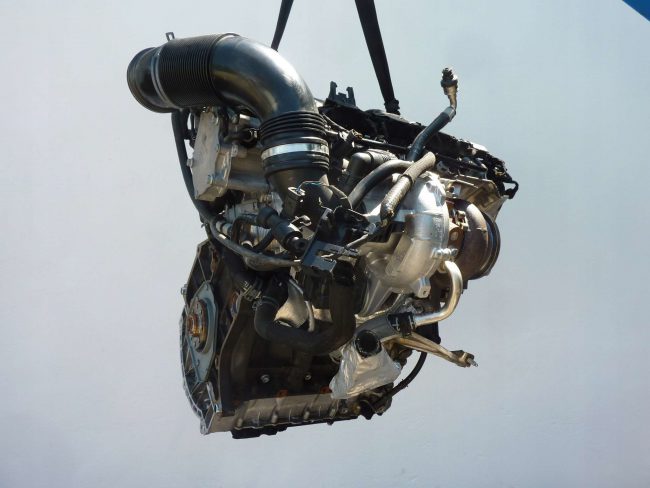
An increase in the main performance indicators of the CJXC and DNUE engines by a quarter, against the factory ones, is achieved by installing an autonomous power boost unit. Its use allows:
- optimize the fuel injection process without increasing the boost pressure;
- increase power by increasing the injection duration.
The power increase unit is non-volatile in relation to the electrical system of the engine.
Such extensive power capabilities allowed engine developers not to supply them with a mechanism for changing the cylinder volume: for the Golf 7 generation, three hundred horsepower is not just enough in excess, a good 25% is completely superfluous here. Of course, if the owner of the car is not a fan of racing stock cars for speed, of which there are a great many on European tracks.

